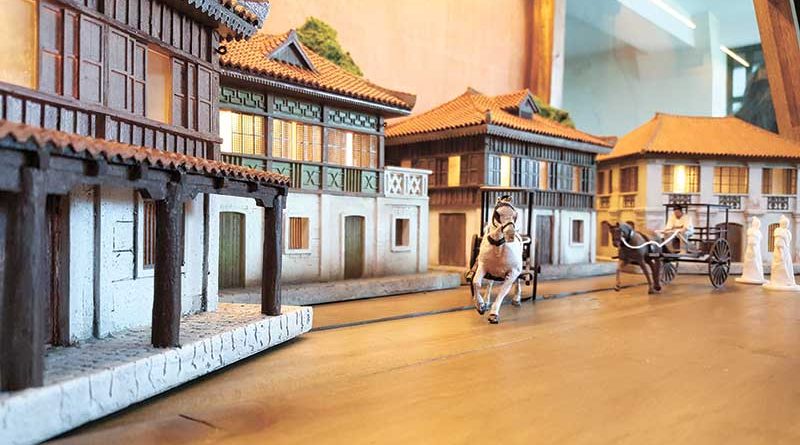Spotlight on heritage
By Karl Aries Emerson F. Cabilao, FUAP
THE Philippines already had a rich and colorful culture even way before it was colonized by the Spaniards and the Americans. However it was in the colonial times when the iconic buildings and urban planning were introduced in most of its cities and towns. The western influx of ideas in building and construction was an important event in history since it was also the time that Filipinos got in contact with architectural and planning concepts straight from the most vibrant part of the world in terms of urban developments at that time. Colonization paved the way for the introduction of sturdier and more aesthetically appealing buildings that reflected the amalgamation of local and foreign cultures.
From the grand Baroque churches of the Spanish-era to the dignified and formal-looking civic buildings of the American-period, these heritage architectural pieces (or whatever remains today) continue to attract the attention of both locals and visitors of a city or town. But many of these monuments have suffered neglect and dilapidation and even the threat of being torn down. Sadly for some, the buildings have long been demolished paving the way for new developments, probably thinking the way most people would view development as always, “out with the old, in with the new”.
But buildings from our colorful past not only add something beautiful (or social-media-post-worthy) to the urban scenery. These buildings speak a lot about our origins and how we have evolved as a community, as a city and as a country. We often marvel at the postcard-worthy historical buildings and landmarks of other countries, but with the proper leadership, management and conservation, our own heritage buildings and sites could also attract a lot of people and establish a unique identity for our cities. Today’s issue gathers different ideas from architects on how our remaining heritage buildings and sites could still get their most deserved spotlight even in our modernizing metropolis.
Roger Andre Aguilar
architect/property specialist/financial adviser
Visiting neighboring Asian cities such as Malaysia and Macau, I noticed how they have preserved their old structures including the landscape with a harmonious co-existence with its modern development all around it which I admire and hope to advocate as well in our country. First and foremost, our Filipino culture should be appreciated through public knowledge. Most of our heritage buildings and sites lack the proper documentation of its age, relevance in history and list of people behind its construction. With the right background, we will create awareness to preserve our buildings and sites that play an important role in our identity as Filipinos. Through the guidance of Architects, our Heritage will continue to flourish amidst the fast changing world we live in, as windows to our past and gateways to our country’s greatness.
Marivic Gulosino-Kapuno
LEED-accredited architect
It would be good to declare historical landmark districts around certain heritage sites, like what was done for the preservation of historic styles in the French Quarter in New Orleans or with our very own Intramuros. With some streets pedestrianized, one can easily be transported to the old Spanish Era in and around the Sugbu Museum for example. It will be highlighted if the facades of its surrounding structures will conform to its architectural style. Also a good mix of retail and food businesses should locate in these sites to attract more tourists.
Ariane Jonelle Alix
architect
Heritage buildings make up a big part of our culture and identity. Unfortunately modernization of cities can cut short the life of these structures. Instead of bulldozing them to the ground, we can highlight our heritage buildings by turning them into vibrant historical destinations such as turning them into museums with historical tours. Not only do we preserve our heritage, but also educate the younger generation of our past.
Arlou Carampatana
Architect II
(Department of Public Works and Highways, Negros Occidental)
There is an existing Heritage Law that is supposed to protect our historical sites and buildings. It might be supported locally with a city ordinance. These buildings might gain more attention if setbacks from the road and adjacent buildings are improved. For this era, an updated documentation on these buildings could also be produced and kept as useful references using building information modeling (BIM) and other software.
Francino Delima
architect/board exam topnotcher
It is still character and value that highlights these buildings and sites apart from the hubbub of modernity. However, each generation’s answer to the trumpet call of safeguard and add to the layers of history is what makes these monuments relevant in each time, our own included. We can channel youthful enthusiasm and creativity from raising awareness to actual techniques; examples of which are innovative ways of adaptive reuse and using new but compatible technologies in knowledge dissemination, building materials and construction techniques. A middle ground should be sought between a hidebound approach that intimidates and alienates, and unbridled progressive intervention that risks eroding their very historic value. At the end of the day, we should remind ourselves that pushing for youth participation is just one of the many integral parts in the concerted effort to preserve our tangible heritage, and that all must work together to face the huge challenge that still remains.



